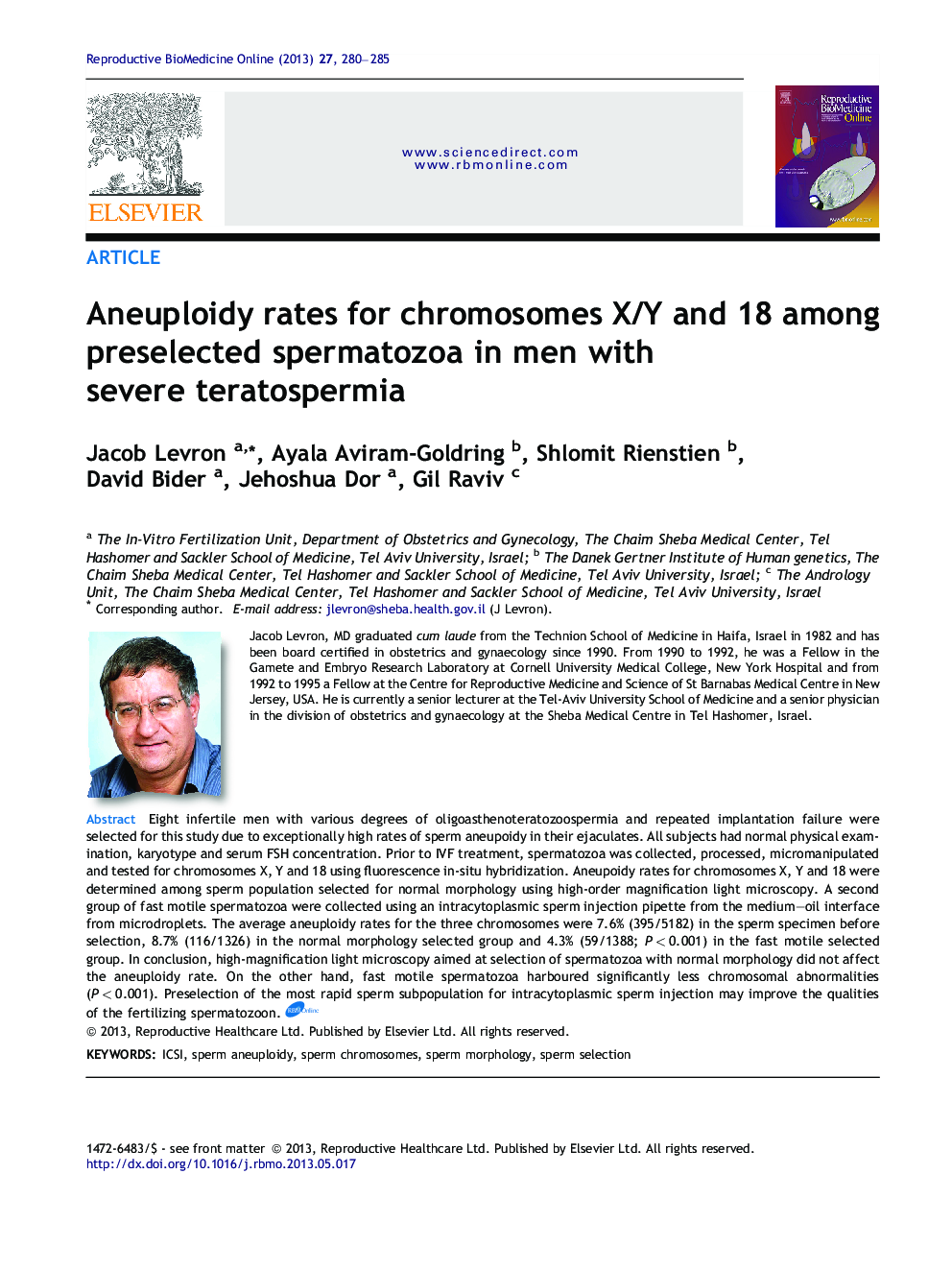| Article ID | Journal | Published Year | Pages | File Type |
|---|---|---|---|---|
| 3970570 | Reproductive BioMedicine Online | 2013 | 6 Pages |
Eight infertile men with various degrees of oligoasthenoteratozoospermia and repeated implantation failure were selected for this study due to exceptionally high rates of sperm aneupoidy in their ejaculates. All subjects had normal physical examination, karyotype and serum FSH concentration. Prior to IVF treatment, spermatozoa was collected, processed, micromanipulated and tested for chromosomes X, Y and 18 using fluorescence in-situ hybridization. Aneupoidy rates for chromosomes X, Y and 18 were determined among sperm population selected for normal morphology using high-order magnification light microscopy. A second group of fast motile spermatozoa were collected using an intracytoplasmic sperm injection pipette from the medium–oil interface from microdroplets. The average aneuploidy rates for the three chromosomes were 7.6% (395/5182) in the sperm specimen before selection, 8.7% (116/1326) in the normal morphology selected group and 4.3% (59/1388; P < 0.001) in the fast motile selected group. In conclusion, high-magnification light microscopy aimed at selection of spermatozoa with normal morphology did not affect the aneuploidy rate. On the other hand, fast motile spermatozoa harboured significantly less chromosomal abnormalities (P < 0.001). Preselection of the most rapid sperm subpopulation for intracytoplasmic sperm injection may improve the qualities of the fertilizing spermatozoon.Eight infertile men with various degrees of oligoasthenoteratozoospermia and repeated implantation failure were selected for the study due to exceptionally high rates of sperm aneupoidy in their ejaculates. All subjects had normal physical examination, karyotype and serum FSH concentration. Prior to IVF treatment, spermatozoa was collected, processed, micromanipulated and tested for chromosomes X, Y and 18 using fluorescence in-situ hybridization. Aneupoidy rates for chromosomes X, Y and 18 were determined among sperm population selected for normal morphology using high-order magnification light microscopy. A second group of fast motile spermatozoa were collected using an ICSI pipette from the medium–oil interface from microdroplets. The average aneuploidy rates for the three chromosomes were 7.6% (395/5182) in the sperm specimen before selection, 8.7% (116/1326) in the normal morphology selected group and 4.3% (59/1388, P < 0.001) in the fast motile selected group. In conclusion, high-magnification light microscopy aimed at selection of spermatozoa with normal morphology did not affect the aneuploidy rate. On the other hand, the fast motile spermatozoa harboured significantly less chromosomal abnormalities. Pre-selection of the most rapid sperm subpopulation for ICSI may improve the qualities of the fertilizing spermatozoon.
